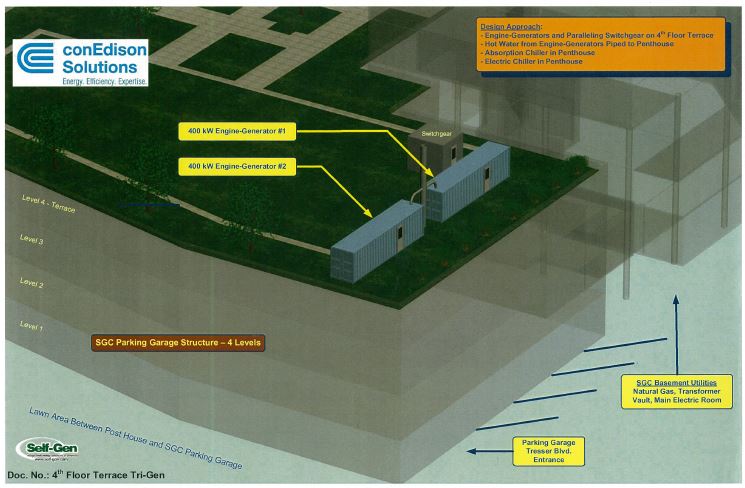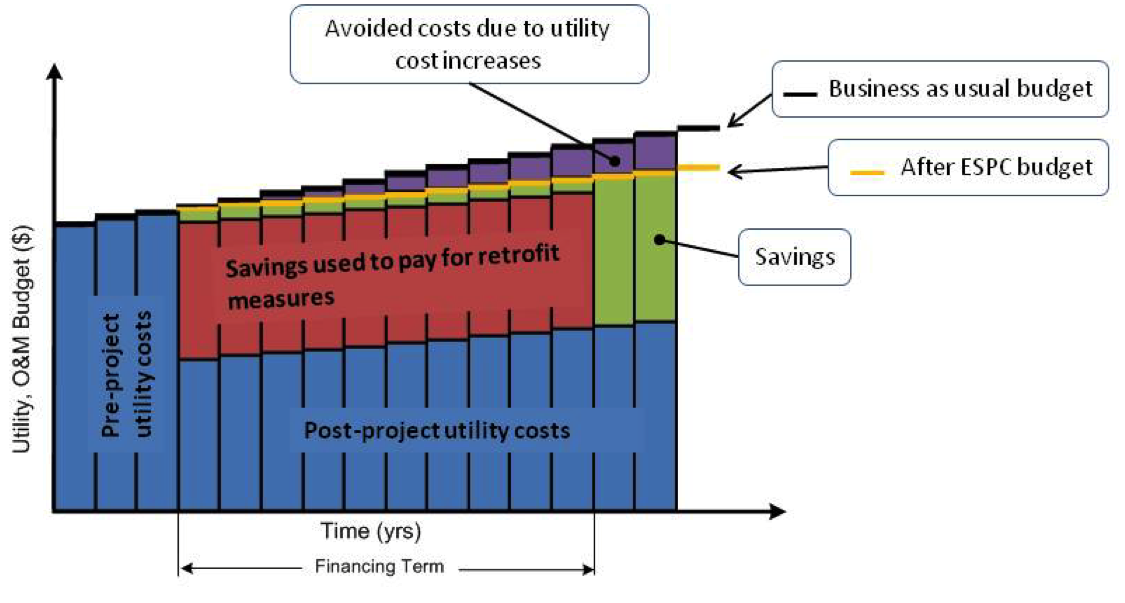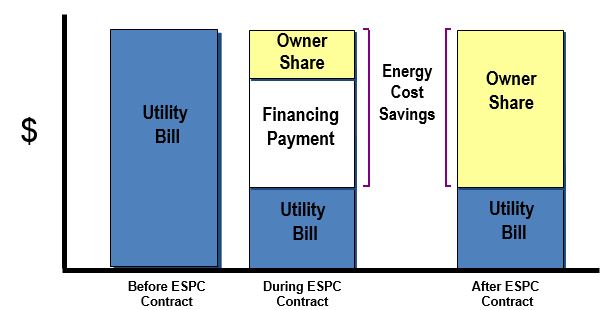
Stamford, Connecticut: a City on the Cutting-Edge of Sustainable Development
Connecticut’s microgrid efforts, municipal development, and pursuit of a 2030 district.

Stamford is the second largest and fastest growing city in Connecticut. Over the last decade the City has been steadily expanding a series of innovative initiatives at the intersection of economic development, sustainability and resilience. The City was a first mover in creating an Energy Improvement District (EID) with the ability to make investments in distributed energy resources and infrastructure city-wide. Stamford’s 2030 District is among a few public/private partnerships in designated urban areas across North America committed to reducing energy use, water use, and transport emissions from buildings. The City is using an Energy Savings Performance Contract (ESPC) that is developing a microgrid at its Government Center and making resilience enhancements to emergency shelter public schools in addition to energy and water saving upgrades, the first U.S. municipality to apply this self-funding retrofit approach in this way. This article describes these efforts underway by the City and its nonprofit and private sector partners, and their shared visions and plans for the future.
THE ENERGY IMPROVEMENT DISTRICT
Founded in 1641, Stamford is home to over 125,000 residents governed by an elected Board of Representatives and a Mayor who serves as chief administrator. Most City offices are located downtown in Stamford Government Center (SGC), a 10 story office building with an attached 4 level parking garage. Built in 1985 as a corporate headquarters but never occupied, the 272,000 square foot building was bought by the City and used as a “city hall” seat of government. SGC hosts critical facilities that is was not designed to support, including data centers, the 911 dispatch Emergency Communications Center (ECC) and the Emergency Operations Center (EOC), the Mayor’s interagency emergency command post. These internal loads grew over time, taxing the building’s cooling system and backup power generation, and spurring modifications and upgrades.
Over the last decade the City has been steadily expanding a series of innovative initiatives at the intersection of economic development, sustainability and resilience.
Stamford is located in southwestern Connecticut that is a recognized area of constrained electrical grid capacity. In the early 2000s the aging, congested downtown grid was overtaxed and suffered repeated interruptions, including a downtown outage in 2006 involving explosions and fires in underground vaults that blacked out SGC and disrupted emergency communications. This situation spurred the utility Connecticut Light and Power (now Eversource) to increase investment in system upgrades.

The administration of then-Mayor Dannel Malloy began considering enhancements of its own. Engagement with the U.S. Council of Mayors led to Stamford deciding to take the lead with a pilot microgrid development, working with a private developer. The original concept involved a microgrid located at SGC and including a neighboring housing authority apartment building. The microgrid was to include a cogeneration or combined heat and power (CHP) system with a fuel cell and reciprocating engine supplied by natural gas.
Simultaneously the City helped draft state legislation (PA 07-242) that enabled municipalities to create an Energy Improvement District (EID), and Stamford became the second community to establish one in 2007. An EID is a tax exempt entity with a municipally-chartered Board comprising both private and public sector members. An EID can develop and operate distributed energy resources such as generation up to 65 MW in capacity and energy efficiency projects; issue revenue bonds; and charge fees for energy. Legislation in 2013 (PA 13-298) enabled EIDs to own and operate microgrids or enter in long-term contracts with energy project developers.
A strategic objective is to develop microgrids that provide high power quality and reliability at low cost to continue Stamford’s history as a destination for corporate headquarters and facilities, less than one hour by commuter rail from New York City.
Stamford’s Mayor appoints 5 or more EID Board members. Chairman Hank Ashforth is a commercial real estate developer and manager who is active in the Urban Land Institute and was involved in creating the Portland, Oregon Lloyd Ecodistrict,which focuses on economic development through sustainable practices. Other members include one person from a local financial services firm, another real estate developer, a member of the Board of Education, and the City’s Director of Economic Development serving as the Mayor’s representative.
That last representative is telling, as Stamford’s EID has had an economic development motive as well as energy surety from the start. A strategic objective is to develop microgrids that provide high power quality and reliability to attract financial services companies with trading floors, data centers, and other information technology intensive employers to Stamford, which is one commuter rail stop up the line from New York City.
The microgrid project stalled for a variety of reasons after Malloy was elected Governor and a new administration came in. The EID retained its interest in microgrid development, and soon events caught up with the City’s trailblazing efforts.
CONNECTICUT’S MICROGRIDS PROGRAM
In 2011 a pair of storms caused prolonged blackouts across Connecticut. In August Hurricane Irene knocked out power for roughly half of the state, with many towns not restored to full service for a week or more. Just before Halloween an early-season Nor’easter dumped snow on trees that still had many of their leaves. Branches and trunks that could not take the weight fell, downing power lines and causing even more widespread and longer power outages. Subsequently Governor Malloy formed the Two Storms Panel, co-chaired by Stamford’s Joseph McGee of the Business Council of Fairfield County. One of the Panel’s recommendations was that the State foster microgrid development for local energy resilience.
The Connecticut Department of Energy and Environmental Protection (DEEP) worked with the state’s two electricity distribution companies to launch the nation’s first microgrids grants and loans program in the fall of 2012. The objective was to help provide energy surety to clusters of two or more critical facilities that could produce energy onsite and operate independent of the electric power system or “grid” in a microgrid configuration. The program provides funding for microgrid electrical infrastructure such as controls, wires, switchgear and the point of common coupling with the grid, as well as some engineering costs; distributed generation has to be funded via other means.
Stamford’s EID submitted a DEEP grant application similar to the initial microgrid concept, working with consultant Celtic Energy Inc. (CEI). Time and resource constraints contributed to the failure to secure an award, although DEEP encouraged the City to try again in a subsequent round of funding.
 THE ENERGY SAVINGS PERFORMANCE CONTRACT
THE ENERGY SAVINGS PERFORMANCE CONTRACT
CEI proposed that the City develop the microgrid project via an Energy Savings Performance Contract (ESPC), the first time a municipality has used an ESPC to retrofit for resilience in this way. An ESPC is a public-private partnership for implementing energy improvements in existing facilities (or new construction). The City engages an Energy Services Company (ESCO) to perform an investment-grade audit (IGA) of energy and water saving opportunities, and recommends upgrades. The ESCO guarantees a given level of utility cost reductions (e.g., 20%) that result from the proposed suite of energy conservation measures (ECMs) in a portfolio of municipal buildings. The City secures third-party financing such as a tax exempt lease purchase or loan, or a bond. The ESCO implements the improvements and monitors the results. The guaranteed savings yield positive cash flow sufficient to cover repayment of the financing over the project term (e.g., 15 years). An ESPC can include a certain amount of capital investment that does not directly produce energy cost savings, such as microgrid infrastructure. Supplemental funds such as grants and utility incentives can support project investment, but if no grants are obtained then the ESPC can still fund the microgrid. The City realizes a turnkey project with guaranteed savings, no money down and off-book financing that is repaid from the savings resulting from the project itself—in effect a self-funding endeavor. CEI serves as the City’s Owner’s Representative to support issuance of an RFP for ESCO selection, and provide quality assurance on the chosen ESCO.
 In late 2014 Stamford selected the ESCO ConEdison Solutions (CES) to perform the ESPC. CES proposed a roughly $20 million project with a 15 year term. The project includes installation of a microgrid at SGC based on natural gas fired reciprocating engines, plus resilience enhancements to the emergency shelter functionality of public schools, in addition to typical energy and water efficiency upgrades. The ESPC provides an integrative framework that first leverages energy efficiency to reduce building loads and upgrade cooling and other systems, then sizes CHP to serve those loads. The CHP systems operate 24/7 under normal conditions and can serve a subset of critical loads in grid-independent “island” mode. The SGC microgrid is planned to provide power, heat and cooling to the ECC, EOC, cafeteria and more, as well as backup power to adjacent housing authority multifamily buildings to enable residents to shelter in place. Two of the five schools in the project are also planned to host CHP that can enable island mode operation. The ESPC also includes a solar power purchase agreements at three schools.
In late 2014 Stamford selected the ESCO ConEdison Solutions (CES) to perform the ESPC. CES proposed a roughly $20 million project with a 15 year term. The project includes installation of a microgrid at SGC based on natural gas fired reciprocating engines, plus resilience enhancements to the emergency shelter functionality of public schools, in addition to typical energy and water efficiency upgrades. The ESPC provides an integrative framework that first leverages energy efficiency to reduce building loads and upgrade cooling and other systems, then sizes CHP to serve those loads. The CHP systems operate 24/7 under normal conditions and can serve a subset of critical loads in grid-independent “island” mode. The SGC microgrid is planned to provide power, heat and cooling to the ECC, EOC, cafeteria and more, as well as backup power to adjacent housing authority multifamily buildings to enable residents to shelter in place. Two of the five schools in the project are also planned to host CHP that can enable island mode operation. The ESPC also includes a solar power purchase agreements at three schools.
Future phases of the ESPC can include additional municipal and school facilities. These investments simultaneously mitigate the risks of climate change by reducing the City’s carbon footprint, and help adapt to those risks with more resilient infrastructure.
THE 2030 DISTRICT
In October 2014 Stamford launched the sixth 2030 District in the country, headed by Executive Director Megan Saunders as a joint effort of the Business Council of Fairfield County and Connecticut Fund for the Environment with support from the Kresge and Tremaine Foundations, among others. Its 36 members include private property owners and managers plus community and professional partners who together provide a business model for urban sustainability through collaboration, leveraged financing, and shared resources. The goal is for new construction and major renovations to attain carbon neutrality by 2030, along with a 50% reduction in existing buildings, following the Architecture 2030 Challenge for Planning. The 2030 District and its partners provide training, practical consulting and other support for members to benchmark and reduce their energy and water use as well as transportation emissions, lower operating costs and environmental impacts, increase property value, and strengthen the resilience of the community and local economy to storms and sea level rise. Stamford is the only 2030 District to include resiliency as one of its stated goals.
VISION FOR THE FUTURE
Stamford’s EID and 2030 District reflect the City’s vision for a sustainable and flourishing future. The Administration of Mayor David Martin is represented on the EID by Director of Economic Development Thomas Madden, who serves as the City’s project manager for the ESPC along with Energy and Utilities Manager Nancy Pipicelli. Madden has long experience in sustainable development including helping create an industrial ecosystem in Nova Scotia. He sees “waste” flows in the City as a resource to be harnessed, for example by diverting organic waste into anaerobic digesters to generate both compost and biogas for local energy production. The EID sees the potential for further microgrid development and has recently expanded its boundaries to encompass the entire city. The City has signed an agreement with Eversource to set municipal and community energy efficiency goals, pursue them with the utility’s support, and become eligible for incentive bonuses for comprehensive achievement. Building on its 2005 Local Action Plan for greenhouse gas reductions, Stamford joined with nearby coastal cities Bridgeport and New Haven to apply for participation in the Clinton Global Initiative’s 100 Resilient Cities program.
The goal is for new construction and major renovations to attain carbon neutrality by 2030, along with emissions reductions in existing buildings.
Stamford is planning and investing for the future by leveraging public-private partnerships and repurposing inefficient energy spending into a down payment on a future that is leaner, greener, less risky and more prosperous.
Our Mission
NESEA advances sustainability practices in the built environment by cultivating a cross-disciplinary community where practitioners are encouraged to share, collaborate and learn.




Add comment